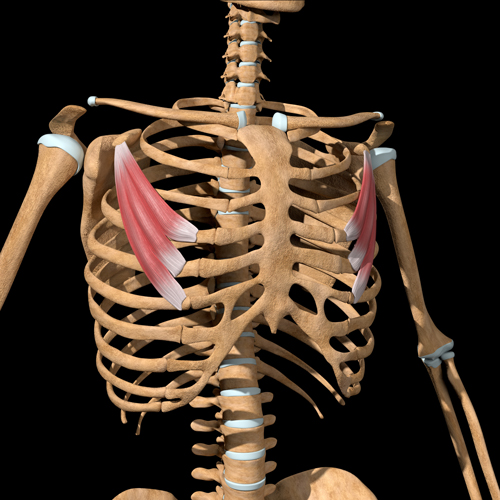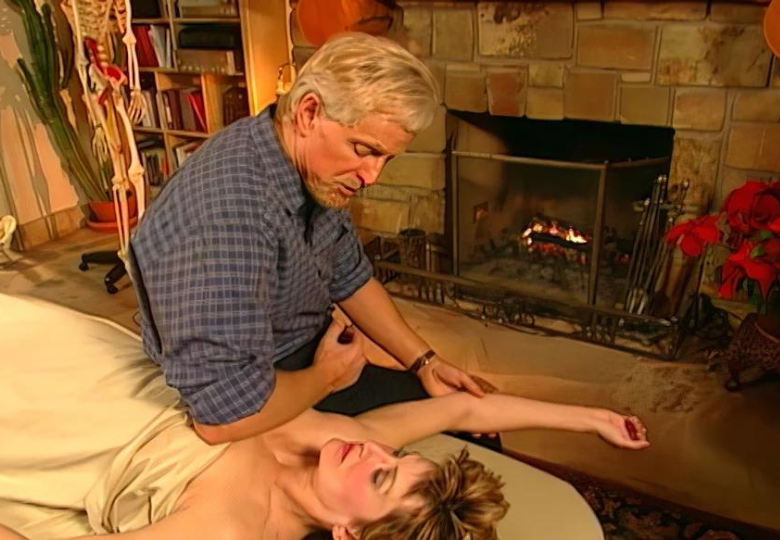
Efficiency of movement, pain reduction, and improved function are the desired outcomes of most types of manual and exercise-based therapies, yet we’ve all seen how tension, trauma, and even overly aggressive bodywork can compromise fluid movement resulting in excessive soreness and stiffness. Such stiffness typically results from perceived threat rather than loss of flexibility based on adhesions, scar tissue, or degenerative changes (although I believe these are often precipitating factors). Like an overly protective mother, the brain will try anything it can to avoid what it believes may cause injury. When working optimally, the brain’s sophisticated built-in adaptive mechanism is excellent at determining whether the body needs more or less protection at any given time.
In my opinion, Graded Exposure Stretching Technique (GEST) is an excellent way to gradually increase flexibility, range of motion, and pain tolerance by exposing clients (especially those central and peripherally sensitized) to feared movements. Although there is little doubt that traditional stretching routines produce an immediate increase in muscle extensibility due to the viscoelastic nature of connective tissue, these effects quickly dissipate. The more permanent extensibility seen in GEST likely results from two factors: the client’s willingness to tolerate the mild discomfort associated with the stretch, and the pain gaiting effect achieved by down-regulating nociception through stimulation of large diameter muscle, ligament, and joint mechanoreceptors during the assisted stretching movement.
In the myoskeletal application of GEST, therapists and clients engage in active feedback while working at the featheredge of the client’s movement restrictive barrier. Muscle energy, joint stretching, and pin-and-twist maneuvers, such as those demonstrated in Images 1. and 2., progressively introduce stretch to areas that have been problematic in the past causing the nervous system to begin associating the new movement with safety instead of pain. Throughout a series of sessions, I’ve noticed a marked decrease in protective muscle guarding, and an increase in pain tolerance and joint range of motion when following these key guidelines:
- Create a safe environment with active client feedback and participation.
- Work at the featheredge of the painful restrictive barrier using small/short doses of GEST to increase flexibility and range of motion.
- Include novel stimuli during sessions by exploring new movement patterns that attract and hold the brain’s attention.
- Offer home-exercise suggestions that reinforce the new movement patterns.
The controlled manipulation of tissue and facilitated movement during GEST offer added safety from overstretching into the painful barrier by providing tactile feedback that prevents the brain from guarding the area with reactive muscle spasm. GEST is particularly helpful for central sensitized chronic pain clients who may be physically deconditioned due to fear of movement or reinjury.
Graded Exposure Stretching Technique:
Pectoralis minor release - elbow technique

- Client externally rotates and abducts right arm and therapist places right flat forearm just below the coracoid process softly pinning the pec minor attachment
- Client begins externally and internally rotating entire arm as therapist holds the pec tissue for a GTO release at the musculotendinous junction
- When a deep fascial hook is established, therapist’s forearm gradually begins traversing down
the client’s chest wall and biceps opening the front of the thorax.
Repeat three times as needed.
Glenhumeral Mobilization

- Therapist stands on client’s ipsilateral side and places client’s extended arm on his shoulder
- Therapist’s hands grasp both sides of client’s shoulder and gently raises client’s arm to the first abduction barrier
- Client gently pushes his arm down toward his side against therapist’s resistance to a count of 5 and relaxes
- Therapist brings client’s GH joint to new neutral abduction restrictive barrier
Repeat routine 3 to 5 times or until client reaches 180 degrees of neutral abduction and retest.
Summary
A GEST desensitization approach is aimed at normalizing sensation by providing consistent stimulus to the affected area for short periods of time. The brain will respond to this sensory input by acclimating to the sensation, thereby gradually decreasing the body’s pain response to the particular stimuli allowing improved flexibility and quality of motion. I believe that good clinical assessment and the appropriate application of GEST combined with self-care advice can be successfully used in conjunction with other therapies to build an effective and powerful pain-management program.









